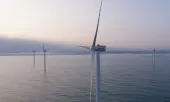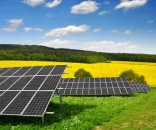
Will India's renewables vision support the grid?
India currently relies on about $250b of fossil fuel imports annually.
India’s Prime Minister Narendra Modi announced a One Sun One World One Grid (OSOWOG) vision encouraging the phased development towards a single, globally connected, electricity grid to leverage renewable energy.
According to a note from the Institute for Energy Economics and Financial Analysis, an accelerated investment in low-cost sustainable energy, with increased scale driving faster electricity deflation is going to be a win.
He noted that India currently relies on about $250b of fossil fuel imports annually, and that OSOWOG would help the country leverage domestic energy resources and progressively develop world competitive renewable exports. This may in turn improve the current account deficit and reduce imported inflation.
“The national grid benefits from a greater capacity to integrate low-cost but intermittent renewable energy, whilst at the same time exporting surplus low-cost renewable energy at times of peak generation and building grid capacity to import electricity at times of peak evening demand, when the sun has set,” said Tim Buckley, IEEFA South Asia’s director for energy finance studies.
Global investors have also shown a growing propensity to invest in India’s renewable energy ambitions, and to support the grid infrastructure that those ambitions need. “For an added benefit, India could move to centre stage globally, accelerating the energy system’s decarbonisation, and helping to end a global climate crisis that India did not create,” he added.
India has pursued international electricity trade for the past few years. Bhutan-India has an international grid connectivity, India-Nepal grid capacity has progressively grown to some 450MW and India-Bangladesh has 1.16GW. However, trade has been largely one-directional, importing hydroelectricity from Bhutan and exporting to Nepal and Bangladesh.
“Ongoing solar energy deflation makes these global visions of the past a potential reality now, and more compelling as this new decade unfolds. Grid connectivity can leverage the time difference between countries to best utilise intermittent but low-cost solar and wind power generation,” Buckley said.













 Advertise
Advertise











